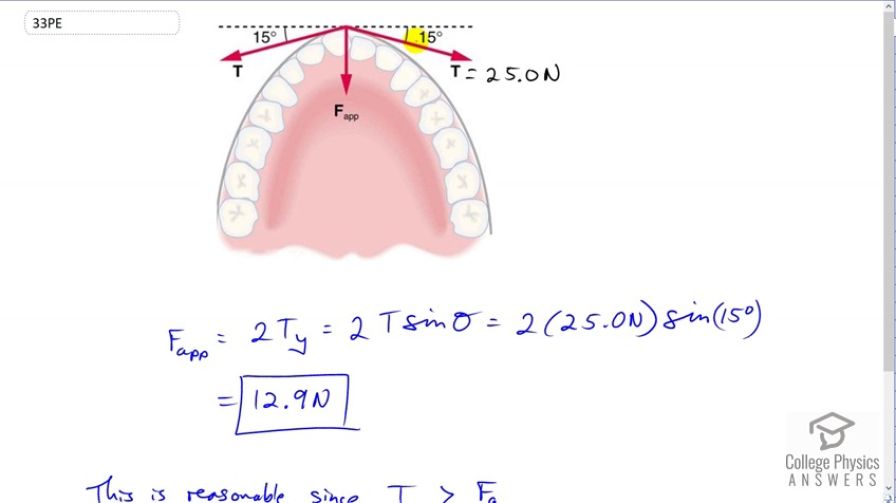Question
What force is exerted on the tooth in Figure 4.38 if the tension in the wire is 25.0 N? Note that the force applied to the tooth is smaller than the tension in the wire, but this is necessitated by practical considerations of how force can be applied in the mouth. Explicitly show how you follow steps in the Problem-Solving Strategy for Newton’s laws of motion.

Final Answer
Solution video
OpenStax College Physics for AP® Courses, Chapter 4, Problem 33 (Problems & Exercises)

vote with a rating of
votes with an average rating of
.
Calculator Screenshots
Video Transcript
This is College Physics Answers with Shaun Dychko. We’re told that the tension in this braces wire is 25 newtons and this angle here is 15 degrees and so we need to figure out what this total force applied on the tooth is. There’s going to be a component of the tension which is in the y direction here that is the opposite leg of this triangle, and so because it’s the opposite leg, we’ll take the tension multiplied by sine of theta to find it. We’re going to multiply this y component of tension by two in order to find the force applied because there is also another y component of it on the other side. So that’s two times 25 newtons times sin 15 which is 12.9 newtons. That seems reasonable, this is the last step in your problem solving strategy by the way, seems reasonable since we expect the tension force to be greater than this applied force because after all it’s only a certain component of this tension which contributes to this and so this should be smaller.
